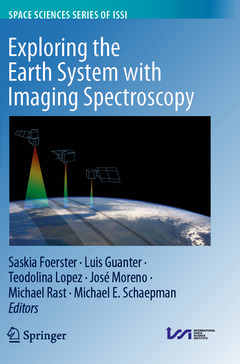Description
Exploring the Earth System with Imaging Spectroscopy, 1st ed. 2019
Space Sciences Series of ISSI Series, Vol. 70
Coordinators: Foerster Saskia, Guanter Luis, Lopez Teodolina, Moreno José, Rast Michael, Schaepman Michael E.
Language: English
Subjects for Exploring the Earth System with Imaging Spectroscopy:
Publication date: 09-2020
Support: Print on demand
Publication date: 09-2019
Support: Print on demand
Description
/li>Contents
/li>Biography
/li>Comment
/li>
Saskia Foerster holds a senior scientist position in the Remote Sensing Section at the Helmholtz Centre Potsdam, German Research Centre for Geosciences (GFZ) in Potsdam/Germany. Her research interests include the monitoring of soil and land degradation processes, water resources and natural hazards using multi-sensor Earth observation data. Furthermore, she has been working in the scientific preparation of the German space-borne imaging spectroscopy mission EnMAP for the past ten years.




